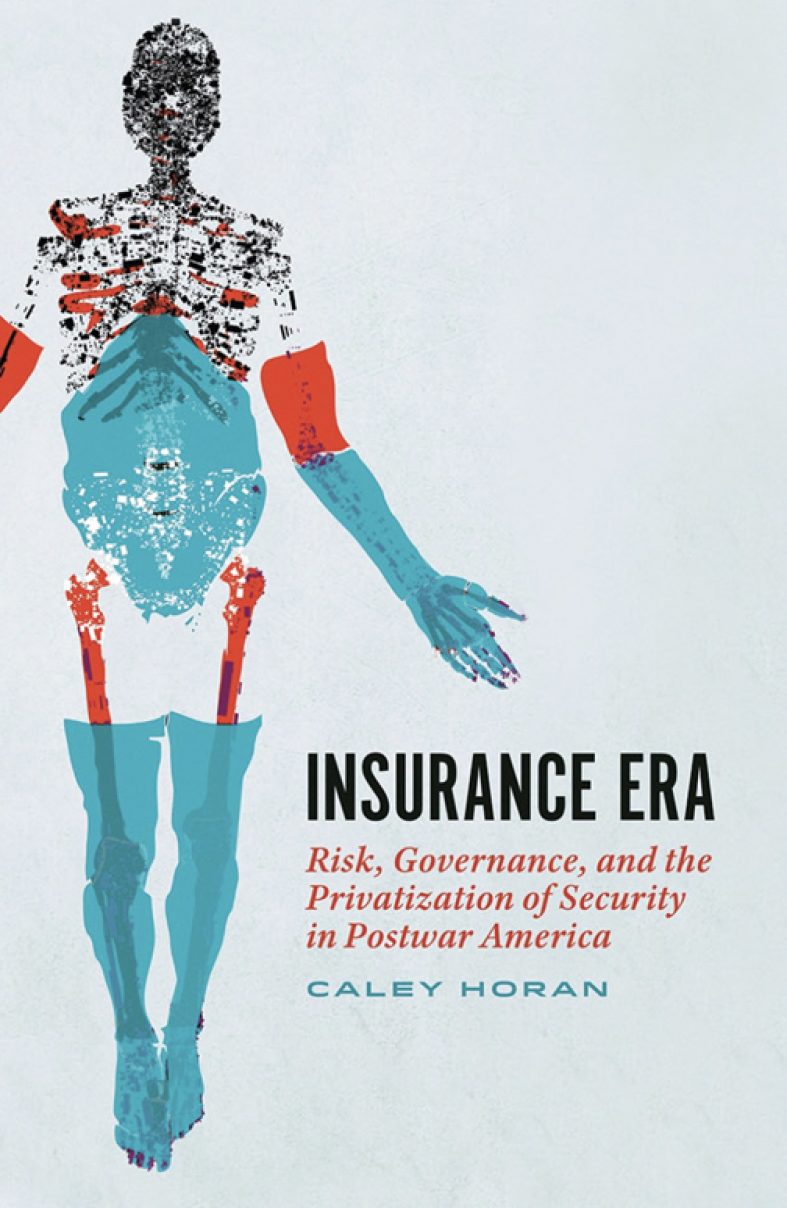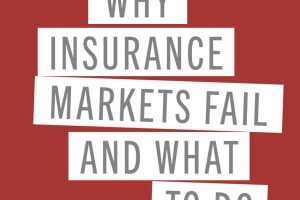Review by Paul Conlin
Insurance Era: Risk, Governance, and the Privatization of Security in Postwar America
By Caley Horan, University of Chicago Press, 2021
Caley Horan is a professor in the History Department of the Massachusetts Institute of Technology—in and of itself an eclectic C.V.—and has written what I’ll characterize as a “collection” of six insurance industry episodes from, primarily, the middle two quarters of the 20th century. Having personally entered the industry and begun my career at the tail end of that bygone era (1988, at Aetna’s 151 Farmington Ave. headquarters in Hartford, Conn.), the controversies and personalities covered in this concise 200-page text—former Society of Actuaries President Gilbert Fitzhugh receives a tangential mention—brought back echoes of nostalgia for me, and for that reason alone I recommend it to all actuaries of my generation (I was born in 1966).
That comparatively sleepy era of life and P&C insurance came to an abrupt end in 1990 through 1992, when new GAAP accounting rules encouraged mass “restructuring charges,” as they could be scored on public earnings releases as non-operating losses. When I started at Aetna, watercooler lore described—accurately—how the company had weathered the Great Depression without laying off a single employee. All officers of the company took a 25% pay cut, and all other employees 10%, but none were forced to endure the 1930s economic calamity without a company paycheck. But in a pair of rounds of corporate housecleaning, first hundreds and then thousands of our colleagues received “The Package”—admittedly very generous severance and cash-out provisions from the defined benefit pension (along a whole separate narrative track, that plan was discontinued in stages, culminating in a full freeze at the end of 2006), and learning the new career skills of “double-dipping”: collecting both Aetna severance and salary from a new employer and navigating the revolving door of employment between other local companies like Cigna, Travelers, and The Hartford (when one or two were in layoff mode, it inevitably seemed the others were in hiring mode). The GAAP accounting rule was horribly misguided, because the restructuring charge tail was wagging the right-level-of-employment-decision dog inside the industry’s C-suites. I would encourage Horan to consider a follow-up text that considers all the misguided, ill-timed GAAP accounting rules that have been enacted since the 1980s (market value accounting just as the 2008 Financial Crisis was cresting, anyone?).
But I digress. To whet your appetite for Horan’s current volume (published in 2021—I’m not sure how it escaped my attention for almost three years), I’ll tease you with two examples.
The first is uncannily timely, considering the whole work-from-home/work-from-anywhere issue surfaced by the COVID-19 pandemic. In 1957, Cigna’s predecessor, Connecticut General, made the ahead-of-its-time decision to open a large suburban campus in the Hartford suburb of Bloomfield. Although the impetus of the decision was a real estate economics decision, its eventual (and somewhat miraculous) success was due to the company’s executives directly encountering and confronting the question, “Why do our employees choose to work for us? What is it that brings them into the office for a large percentage of their waking hours?” (Spoiler alert: It’s generally not a paycheck.) The winners of the post-Covid workplace evolution will be those with the vision of CG’s 1957 planners and architects, and thus, this chapter of Horan’s book could not be more timely.
The second teaser I’ll offer up to you is the decade-long (say, 1978 to 1988) “unisex rating” controversy in light of the U.S. Supreme Court’s Manhart decision. As we’re learning in the 2020s as transgenderism becomes more mainstream in society, it’s hard to keep this topic on the direct actuarial issues without accidentally (and, sometimes, by certain actors, intentionally) stepping on toes or hurting feelings; it’s a challenge to sift out the well-intentioned argument threads from the trolling. If social media had been around during the unisex rating debates, the topic would have generated even more hurt feelings than it did at the time, but Horan’s many citations remind us that the issue burned pretty hot even in its own era. Whether it was intentional or not, Horan has floated for our consideration a bygone argument that is uncanny in its parallels to contemporary discussions.
If I have a bone to pick with Horan on the completeness of her scope, I would mention complete absence of any health insurance/HMO/national health insurance/Affordable Care Act topics at all, even though the era began with Blue Cross entities every bit as embedded in the background as the many life/P&C entities which receive coverage, and even though the topic of what sort of health insurance marketplace we were to have was top-of-list of U.S. presidential elections from Truman to Obama. That is why I characterize the book as a collection, rather than a true survey.
But that complaint is a minor one. If only for a pleasant stride down memory lane (and in 2024, who can’t use one of those?), please purchase and read this book. You won’t regret it.
PAUL CONLIN, MAAA, FSA, is an executive director at CVS-Aetna, where he has been employed for 36 years.





